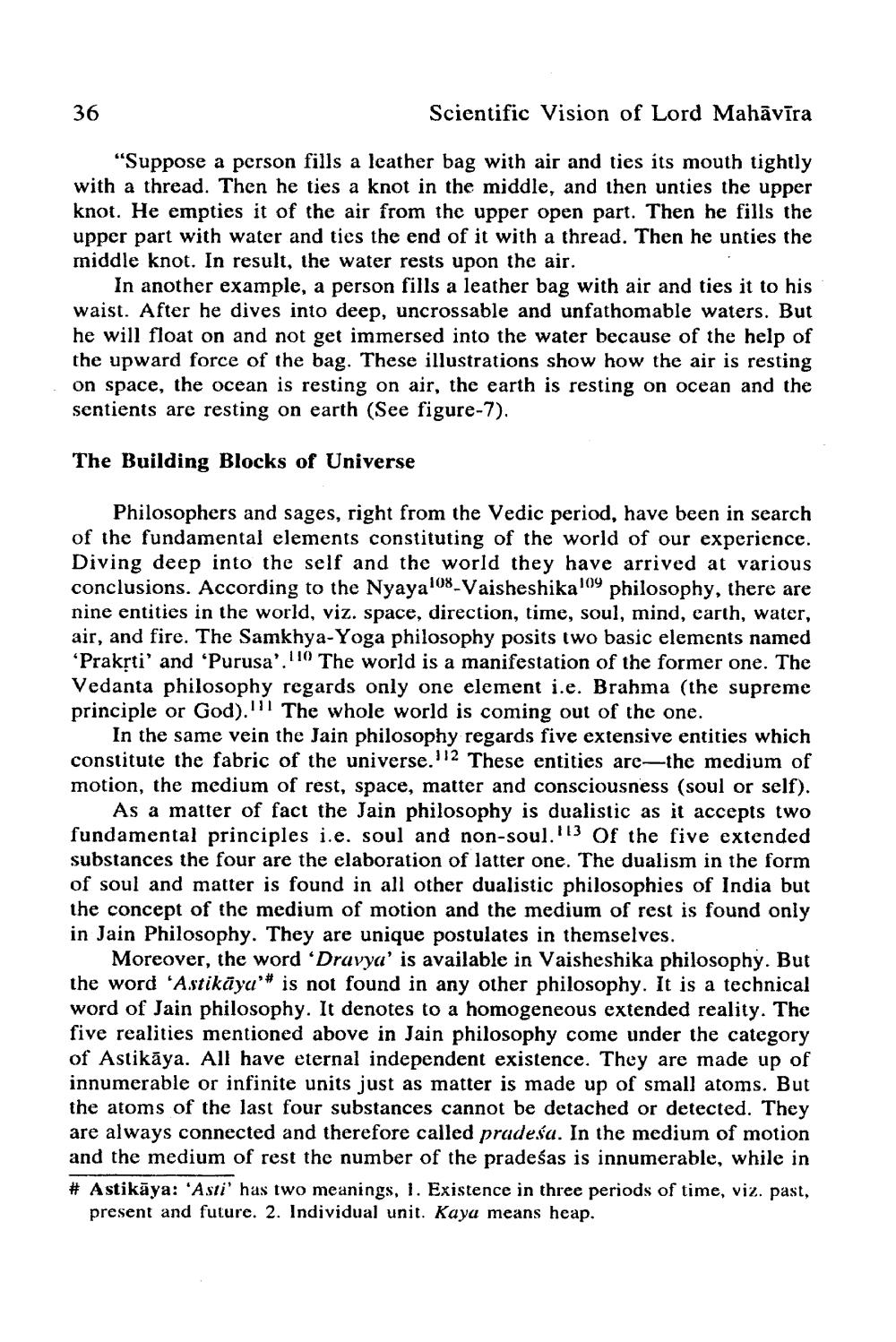________________
36
Scientific Vision of Lord Mahāvīra
“Suppose a person fills a leather bag with air and ties its mouth tightly with a thread. Then he ties a knot in the middle, and then unties the upper knot. He empties it of the air from the upper open part. Then he fills the upper part with water and ties the end of it with a thread. Then he unties the middle knot. In result, the water rests upon the air.
In another example, a person fills a leather bag with air and ties it to his waist. After he dives into deep, uncrossable and unfathomable waters. But he will float on and not get immersed into the water because of the help of the upward force of the bag. These illustrations show how the air is resting on space, the ocean is resting on air, the earth is resting on ocean and the sentients are resting on earth (See figure-7).
The Building Blocks of Universe
Philosophers and sages, right from the Vedic period, have been in search of the fundamental elements constituting of the world of our experience. Diving deep into the self and the world they have arrived at various conclusions. According to the Nyaya 108-Vaisheshika 109 philosophy, there are nine entities in the world, viz. space, direction, time, soul, mind, carth, water, air, and fire. The Samkhya-Yoga philosophy posits two basic elements named ‘Prakrti' and 'Purusa'. 110 The world is a manifestation of the former one. The Vedanta philosophy regards only one element i.e. Brahma (the supreme principle or God).111 The whole world is coming out of the one.
In the same vein the Jain philosophy regards five extensive entities which constitute the fabric of the universe. 112 These entities are—the medium of motion, the medium of rest, space, matter and consciousness (soul or self).
As a matter of fact the Jain philosophy is dualistic as it accepts two fundamental principles i.e. soul and non-soul.113 of the five extended substances the four are the elaboration of latter one. The dualism in the form of soul and matter is found in all other dualistic philosophies of India but the concept of the medium of motion and the medium of rest is found only in Jain Philosophy. They are unique postulates in themselves.
Moreover, the word 'Dravya' is available in Vaisheshika philosophy. But the word 'Astikāya'* is not found in any other philosophy. It is a technical word of Jain philosophy. It denotes to a homogeneous extended reality. The five realities mentioned above in Jain philosophy come under the category of Astikāya. All have eternal independent existence. They are made up of innumerable or infinite units just as matter is made up of small atoms. But the atoms of the last four substances cannot be detached or detected. They are always connected and therefore called pradeśa. In the medium of motion and the medium of rest the number of the pradeśas is innumerable, while in # Astikāya: 'Asti' has two meanings, 1. Existence in three periods of time, viz. past,
present and future. 2. Individual unit. Kaya means heap.




